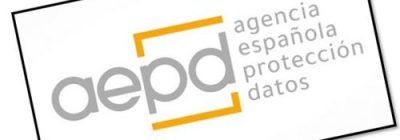You have a significant participation in the capital of an SL and wish to abandon it. Well, do not allow the value of your shares to be returned to you through a simple reduction in capital.
There is a better alternative…
Capital reduction by paying Itp
Exit of a company’s capital (classic option)
If you want to leave the capital of an SL and disassociate yourself from it, the simplest option is to sell your shares to the other partners, in proportion to the percentage of participation that each of them has in the company (remember that the rest of the partners have a preferential acquisition right).
However, if no one could exercise their right of purchase (for not having enough money, for example), they can decide that the acquirer is the company itself or a third party.
Capital reduction via corporate operations
If the partners agree that the acquirer of the shares is the company itself (thus avoiding the entry into the capital of a third party), the most common is that this is carried out through a capital reduction (amortising the shares of which you are the holder). Watch out!
However, this operation has an additional tax cost for you: you must satisfy 1% of the amount you receive from the company, as a Property Transmission Tax, in the modality of Corporate Operations (ITP-OS).
Purchase and sale of shares and self-portfolio without paying Itp
Purchase of shares
Well, know that you can avoid this cost of ITP-OS.
To do this, ask the rest of the partners, instead of carrying out a capital reduction, to proceed as follows:
First of all, the SL must buy its shares, thus generating a “self-portfolio”. As it is a sale of shares, the operation will be exempt from ITP.
Although in general the SLs cannot constitute a self-portfolio, they can do so if certain requirements are met and the purpose of this is to carry out a capital reduction agreed by the general meeting or exclude a partner from the company.
Autoportfolio amortisation via capital reduction
After acquiring its shares, the company must amortise said own portfolio through a capital reduction, canceling it without tax cost.
In principle, capital reductions are subject to ITP-OS.
Now, as in this case you do not receive any refund of contributions (you have charged for a sale, not for the capital reduction), the taxable base of said tax is zero.
Example of how to disassociate yourself from your company without paying 1% of Itp
You want to leave a company in which you have shares valued at 400,000 euros. Well:
If the company reduces the capital in the part corresponding to its shares and returns this amount, it must satisfy an ITP-OS of 4,000 euros (1%).
On the other hand, if the company buys its shares (satisfying the 400,000 euros) and thus generates a self-portfolio that then amortises with a capital reduction, neither you nor the company will have to satisfy ITP-OS.
You have to pay personal income tax in both options
Cost in the personal income tax of the capital reduction
Of course: regardless of whether your disconnection occurs through a direct capital reduction or through the constitution of a self-portfolio, you must declare in your personal income tax a capital gain (computable on the basis of savings) for the difference between the net amount you receive from the company and the acquisition value of the shares.
In case they have opted for a capital reduction, you can calculate the ITP-OS that you satisfy as a lower amount received and a lower profit.
As a tax in the personal income tax the reduction of capital
The summary
If you want to disassociate yourself from your company, it is better that the company buys your shares (constituting a self-portfolio) and then amortize them.
In this way, you will save yourself having to pay ITP-OS for the operation.












